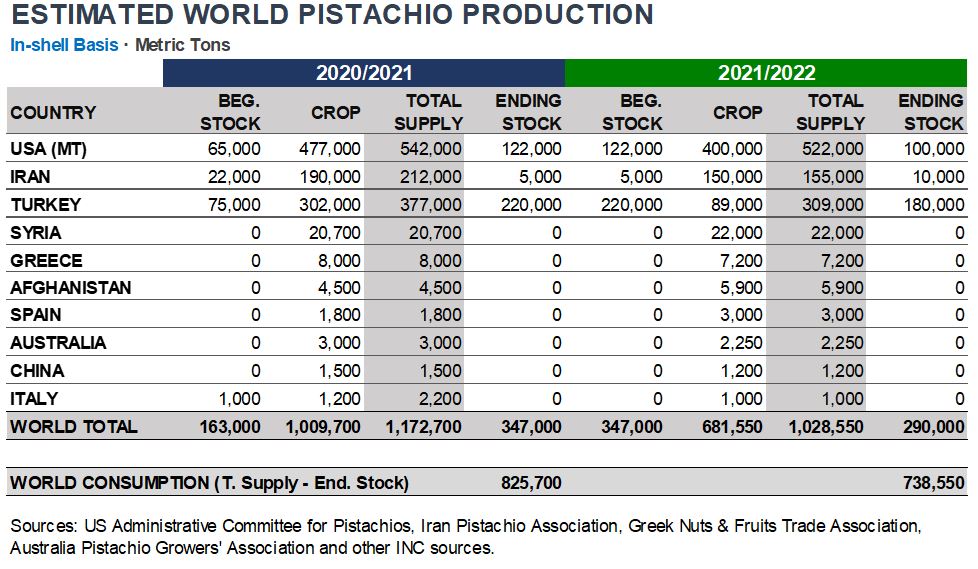
Pistachios USA
Although there are some ongoing water issues in California, water availability is expected to be sufficient for this season. Besides, sustainable farming is on the rise, more and more growers are using agronomical practices to improve water penetration. There is also increased use of cover crops and compost, which leads to reduce water needs. Pistachio quality has also improved in recent years, primarily, due to farmers harvesting early and shaking twice, undergoing winter sanitation and utilizing mating disruption pest control.
There are new plantings going in every year, at an approximate rate of 5-7% increase per year. And some of these new plantings entering into production will reflect in the 2021 crop. It is anticipated that the industry will continue to grow, the demand has been strong, and at least in the near term, it will meet the growing supply. Some of the pandemic-related habits, that led to around a 10% consumption increase in the snacking category, are expected to continue in the long term. Additionally, the kernel market has grown dramatically during this last year. The biggest challenge for the California pistachio industry is the ongoing tariffs into the Chinese market and the trade barriers that have put the US product at disadvantage.
Pistachios Iran
As reported by the Iran Pistachio Association, the current crop is expected to be around 150,000 metric tons (in-shell basis) due to severe frost and heat damages. Preliminary, the 2021/22 crop will be composed of 36% Ahmad Aghaei, 32% Fandoghi, 17% Jumbo and 15% is Akbari. The small percentage of Akbari is due to the frost damage, that impacted more this particular cultivar than the others.
Out of the 31 states in Iran, 27 of them cultivate pistachio, with some new plantings. All together they add up to 340,000 ha of bearing pistachio orchards. Although productivity is very variable, from 100 to 4,000 kg/ha, the geographical diversity is likely to reduce production fluctuations and the Iranian crop is expected to reach around 200,000 MT on average during the next 4-5 years. New plantings consist mostly of long varieties (AA and Akbari), so this kind of cultivar is foreseen to dominate the production.
Pistachios Turkey
For the 2021/22 season, a strong off-year is expected, weather conditions were adequate, with average rainfall, but with lower-than-average chilling hours and really exhausted trees from last year's record crop. Based on 540,000 bearing acres (218,000 hectares), the new crop is forecasted to yield about 500 pounds per acre (560 kg/ha), which is very low, and around 89,000 MT in-shell.
In Turkey, new plantings have been increasing over the previous ten years. Around 380,000 acres (153,000 ha) of the total planted area are yet not bearing. Growing regions are expanding towards the South East of the country, and new plantings are under irrigation and applying modern agronomical practices, which will noticeably improve yield per unit land area compared to the national average.
